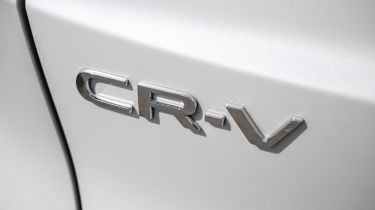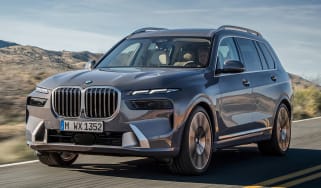Honda CR-V - Reliability and safety
There’s no reliability data yet for the Honda CR-V, but the Euro NCAP crash test safety rating is disappointing

Safety experts at Euro NCAP have given the Honda CR-V two ratings due to the Sensing 360 safety assistance technology being optional on European models. Without it, the CR-V is a four-star car because of concerns that it may not recognise vulnerable road users in an emergency situation. Cars with it (like all models sold in the UK) get the maximum five-star rating, because the upgraded safety assistance system uses a combined radar and camera-based system that’s better equipped to spot pedestrians and cyclists, and apply countermeasures to either mitigate or avoid a collision with them.
Every version of CR-V comes with blind spot monitoring to warn you of vehicles approaching you on either side, autonomous emergency braking (AEB) to help prevent or mitigate collisions at low speed with pedestrians, vulnerable road users or other vehicles. There’s also an eCall to proactively contact the emergency services if the car is involved in a collision where the airbags are deployed, along with a front and rear cross-traffic alert system to warn you of approaching vehicles when attempting to exit a blind junction or merge between parked cars.
We don’t have any specific reliability data from our 2023 Driver Power satisfaction survey for this generation of CR-V because it’s so new, but we can say that Honda as a brand managed a middling 18th place out of 32 manufacturers. That puts it below Hyundai, Toyota and Kia, but above Nissan, Skoda, VW, Ford, and Renault.
Warranty
The standard manufacturer’s warranty is three years/90,000 miles (whichever comes first), but this can be upgraded either for an additional one or two years – or as part of an add-on to a five-year service plan (more about that in the next section). The cost is either £499 for an additional year, or £899 for two years.
However, a number of rivals have more generous warranty packages, such as Hyundai with its five-year/unlimited mileage warranty, or Toyota with its up to 10 years/100,000-mile warranty – provided you keep having your car serviced annually at a Toyota dealership.
Servicing
Scheduled servicing is as per the terms and conditions of Honda’s five-year servicing plan, meaning the CR-V will need servicing annually or every 12,500 miles.
Speaking of the service plan, you can purchase a five-year policy (transferable to subsequent owners) for £799, and you could add the Customer Care Package add-on to that for an additional £399 to extend the warranty and roadside assistance policies up to five years.








